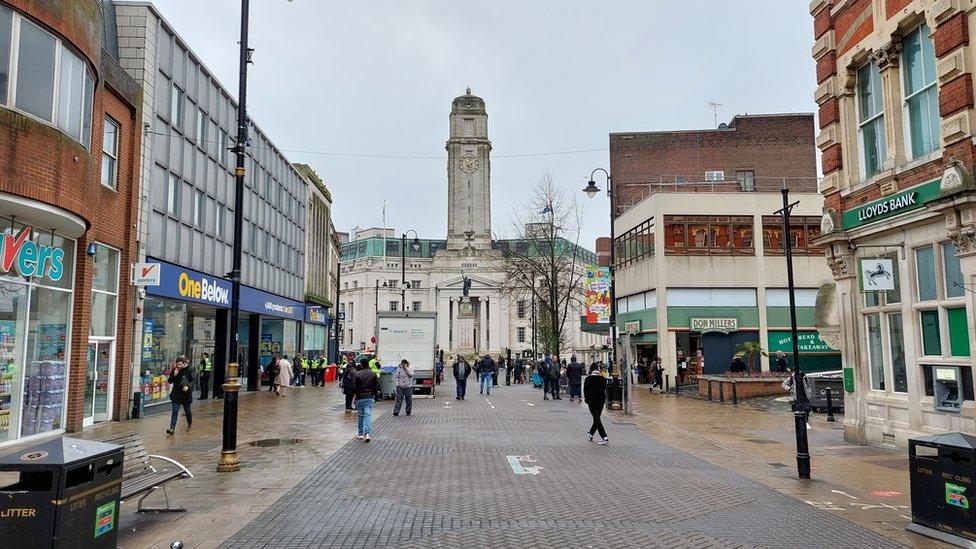Historic England's 2023 heritage register reveals sites at risk
- Published

The Great White Horse, Ipswich, suffers from dry rot on the second floor and its gutters and drainpipes are in poor condition
A hotel which was the inspiration for the inn in Charles Dickens's Pickwick Papers and a rare Cold War defence system have been added to the Historic England at risk register.
They are among 31 buildings in the East of England placed on the register for 2023, the 25th year since the list was created.
There are 4,871 English entries, 48 fewer than in 2022.
Historic England said it "shines a light" on sites most in need.
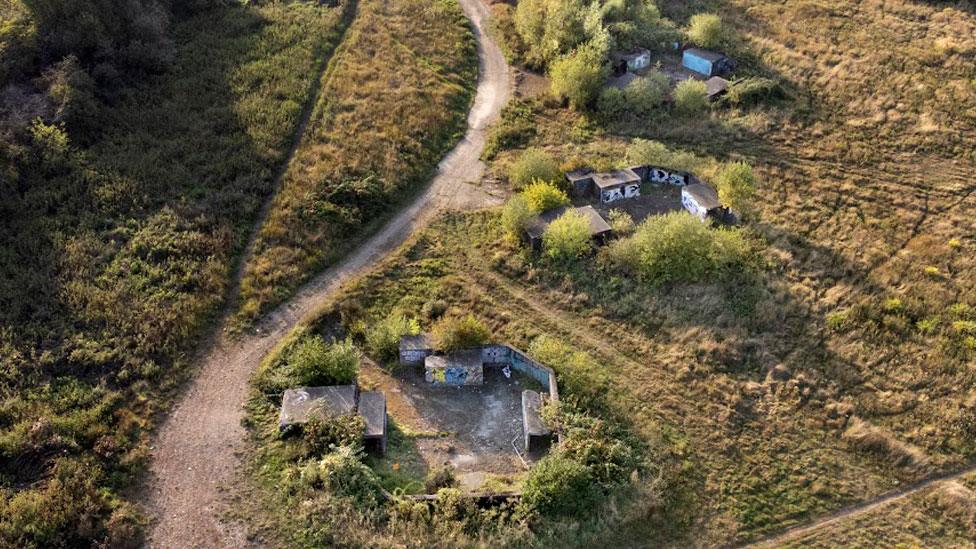
The remains of a heavy anti-aircraft battery at Roydon, Essex, is a rare survivor of the Cold War tensions of the post-war era
The Heritage at Risk Register gives "an annual snapshot of the health of England's valued historic buildings and places", according to the public body.
However, nine locations, including one of England's oldest windmills, have been restored in recent months.
Historic England regional director Tony Calladine said: "It is truly inspirational to see communities coming together to help save historic buildings and places and find new uses for them."
Arts and heritage minister Lord Parkinson of Whitley Bay said: "It is heartening to see that so many sites have had their futures secured and have been taken off the register over the past year thanks to the hard work of Historic England and local people."
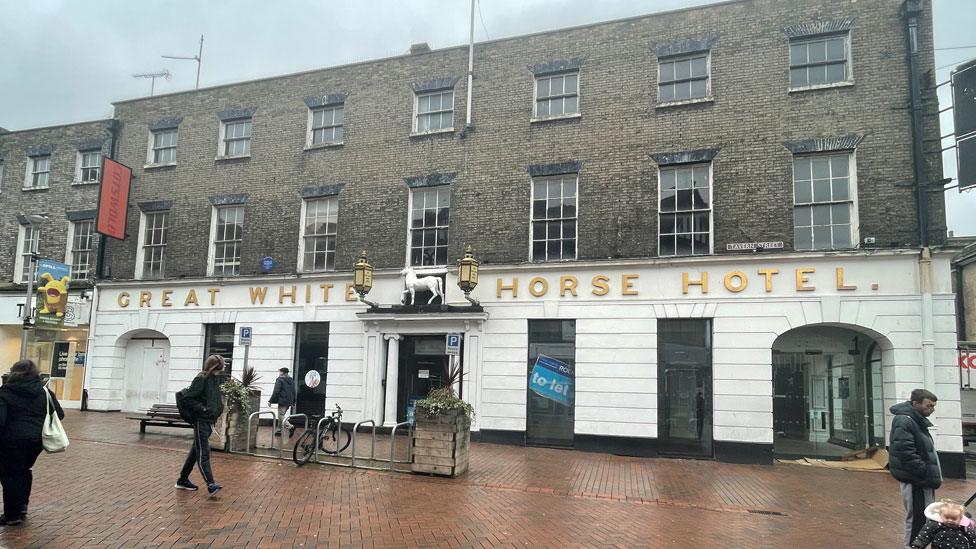
Other visitors hosted by the Great White Horse Hotel include George II, Admiral Lord Nelson and The Beatles
Victorian inspiration
Dickens, the 19th Century author and social critic, was a regular guest at the Great White Horse Hotel in Ipswich, Suffolk.
The Grade II* listed building was originally a 16th to 17th Century timber-framed structure, before it was re-fronted using Suffolk white bricks.
As well as the inspiration for Dickens's Pickwick Papers, published in 1836, the hotel hosted King George II, Admiral Lord Nelson and The Beatles.
Today it has dry rot on the second floor, loose plaster detailing in its ballroom and its gutters and drainpipes are in poor condition.
Cold War survivor
The buried remains of a heavy anti-aircraft battery at Roydon, Essex, is a rare relic of the Cold War era.
It includes four gun emplacements, a generator block and a control room, and became operational between 1949 and 1950.
The site suffers from progressive decay, the concrete has failed in the control room and suffers from vandalism.
A much-loved ruin

Local volunteers care for St Margaret in West Raynham and hope it can be safeguarded for future generations
The ruined medieval church of St Margaret in West Raynham, Norfolk, was abandoned in the early 18th Century.
It is now a haven for wildlife and supported by a group of concerned villagers.
Previous restoration means the Grade II listed building can be used for open-air services, the first time worship has been held at the church for more than 300 years.
Local resident David Stubbs said: "Our focus now is to safeguard this heritage for future generations and to be an exemplar to inspire similar projects."
George III's wartime refuge
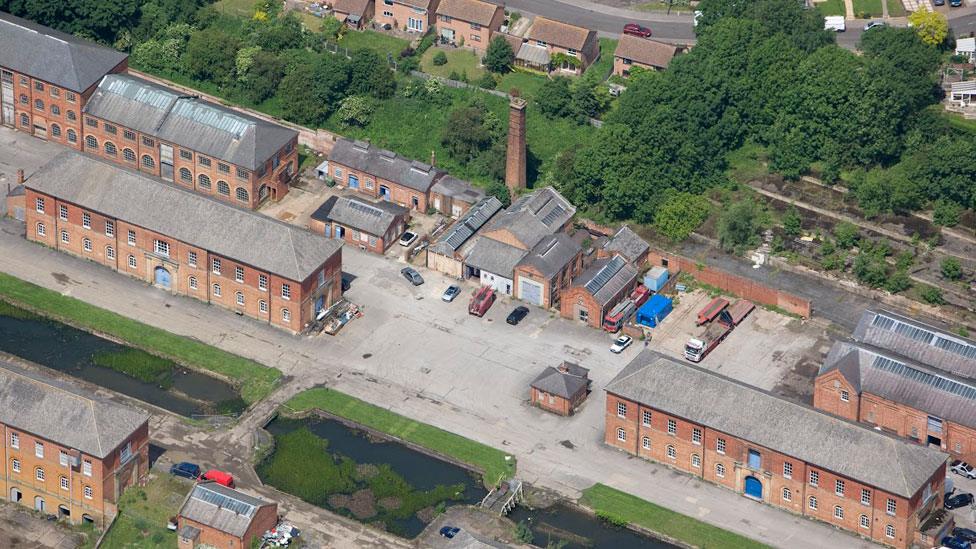
The Royal Military Depot was built at Weedon during the Napoleonic Wars in the early 19th Century
A Napoleonic-era arms depot has been transformed after decades of neglect and is now home to an interesting variety of businesses and a visitor centre.
The Grade II* listed Royal Military Depot at Weedon was vital to the supply of weapons, ammunition and equipment to the British Army.
Its Northamptonshire location was deemed less vulnerable to attack than military installations in the south of England.
It would have been a refuge for George III had Napoleon's threatened invasion of Britain taken place.
Ruined chapel stabilised
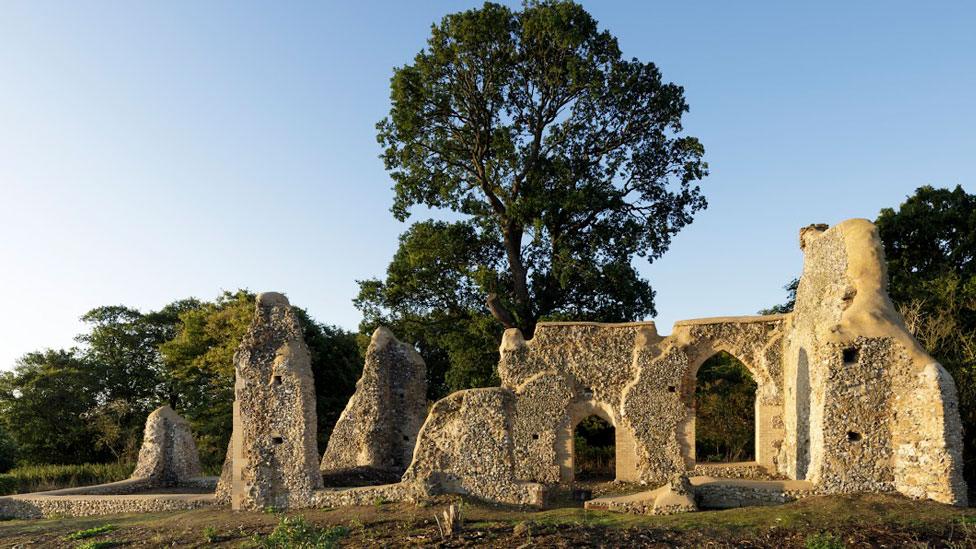
This isolated flint church ceased to be used for services in the early 18th Century, after a piece of masonry fell on a minister
Minsden Chapel was neglected for centuries, but a major repair project funded by Natural England stabilised the walls.
The building, although abandoned and left to deteriorate, was home to a large congregation of nonconformists (Protestants who were not part of the Church of England) in the 18th Century.
Its last known service was a wedding in July 1738, when a piece of masonry fell on a book held by the minister.
The small flint church, a Grade II listed monument, was built in about the 14th Century, and can be found in fields above Chapelfoot, near Preston, Hertfordshire.
Windmill's future secured

One of only 50 trestle post windmills left in the UK, Bourn Mill is now saved for future generations
Another success story in 2023 was the rescue from collapse of one of the oldest windmills in England.
Bourn Mill's main post dates to between 1513 and 1549.
The charity that owns it, Cambridge Past Present & Future, initially saved it from dereliction when it bought the building in 1932.
Following a three-year restoration, the Grade I listed Cambridgeshire building showcases heritage skills.
Church once painted by John Constable
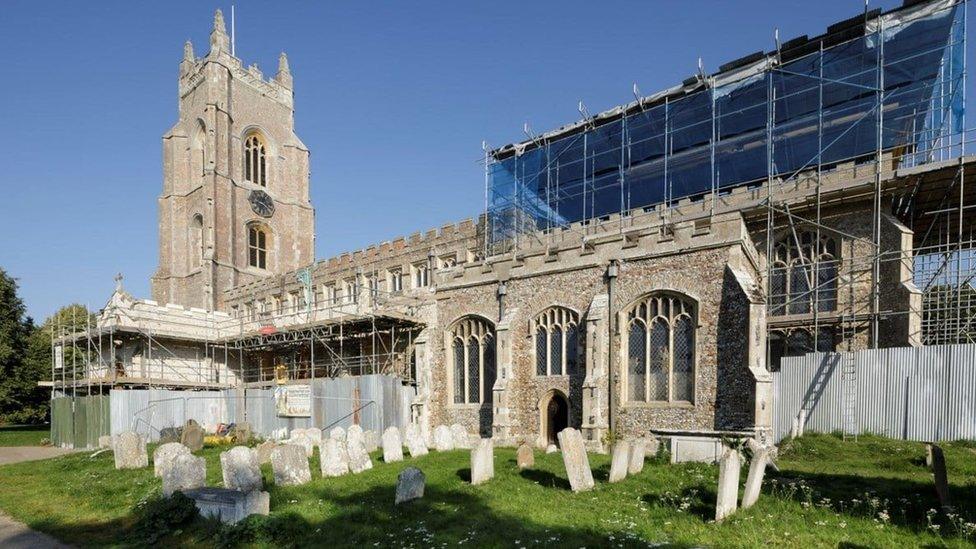
Repairs are under way at St Mary's, Stoke by Nayland, Suffolk
Major repair works are also under way at an "at risk" village church in Suffolk once painted by the renowned landscape artist, John Constable.
The painter said the "lofty and slender proportions of the tower arch are the crowning beauty of the whole interior" of St Mary's in Stoke by Nayland.
The church was rebuilt in the 15th Century, but parts of the south aisle wall fell in October 2020, revealing structural instability, Historic England said.
"Planned work to re-slate the chancel roof uncovered the unstable condition of parts of its walls which have had to be replaced," it added. Historic England has awarded a repair grant of £135,507, with the work due to be completed by December 2023.

Follow East of England news on Facebook, external, Instagram, external and X, external. Got a story? Email eastofenglandnews@bbc.co.uk, external or WhatsApp 0800 169 1830.
- Published28 June 2023
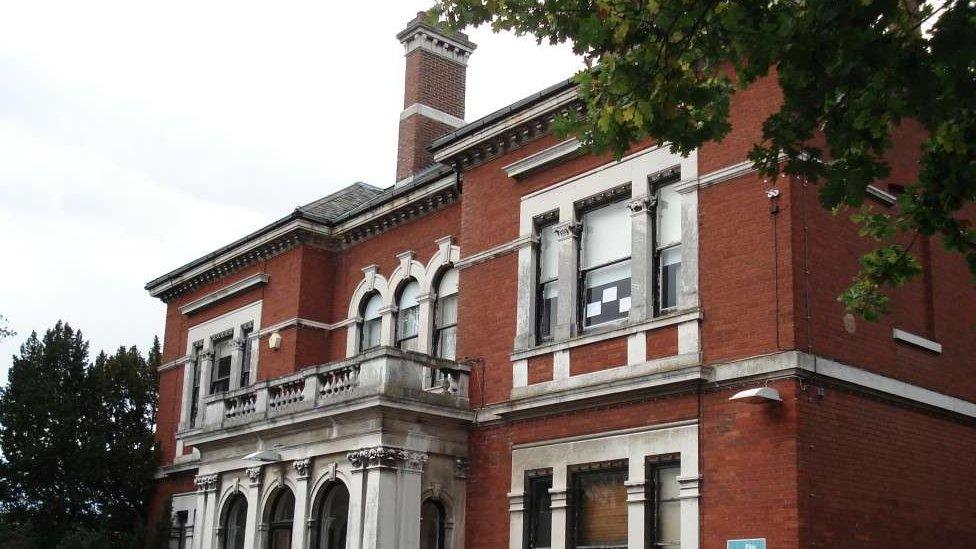
- Published28 June 2023
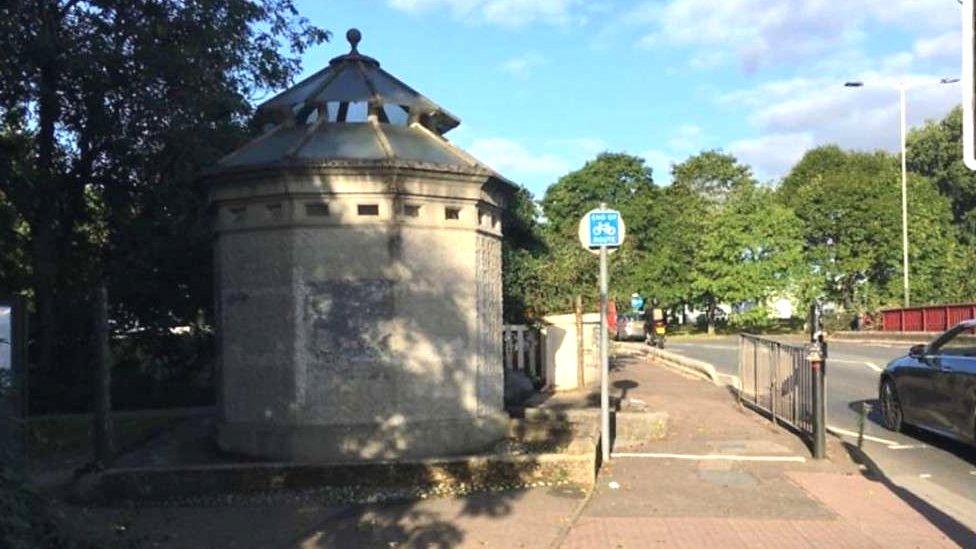
- Published19 April 2023
- Published7 March 2023
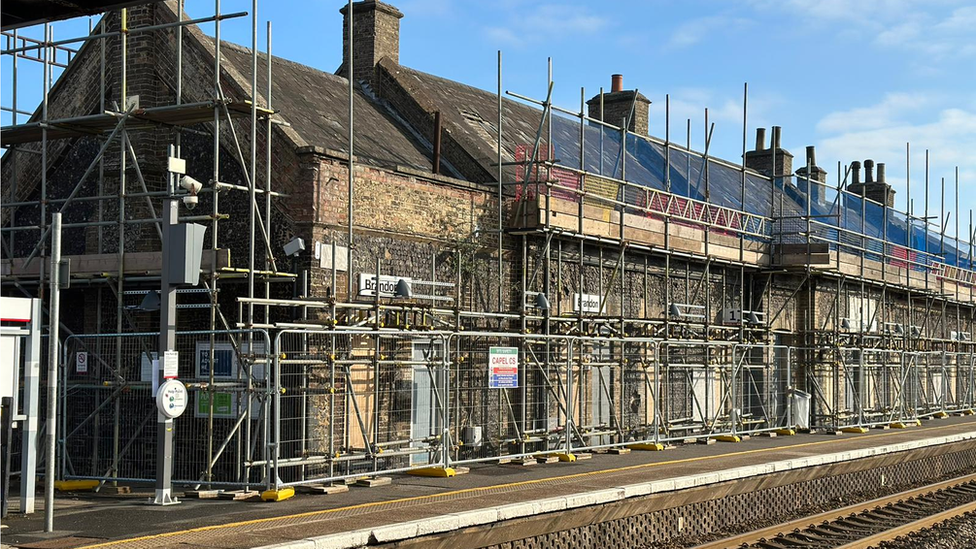
- Published11 November 2022
